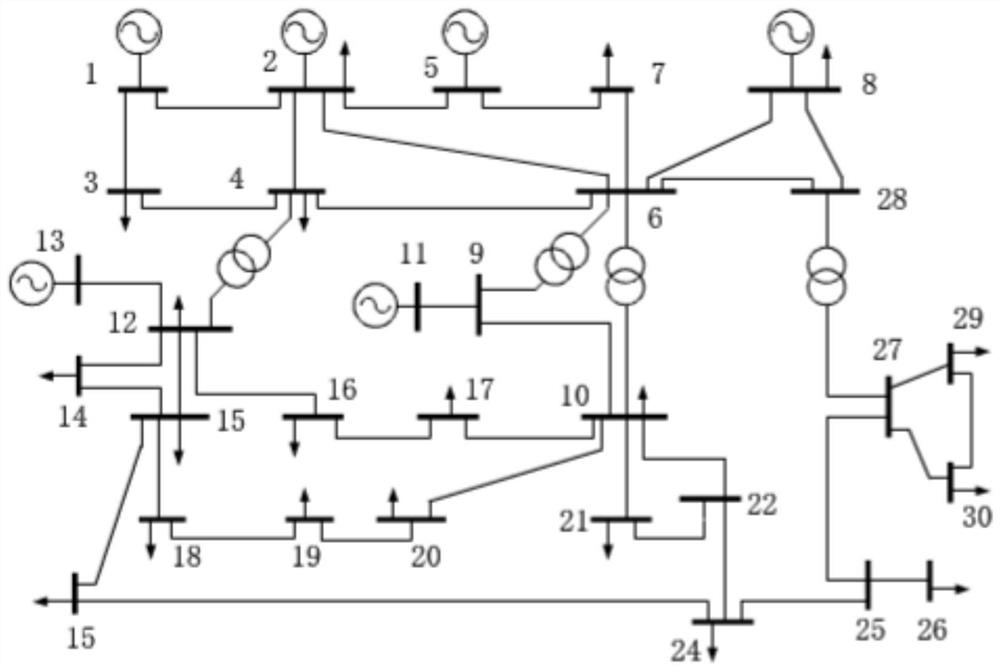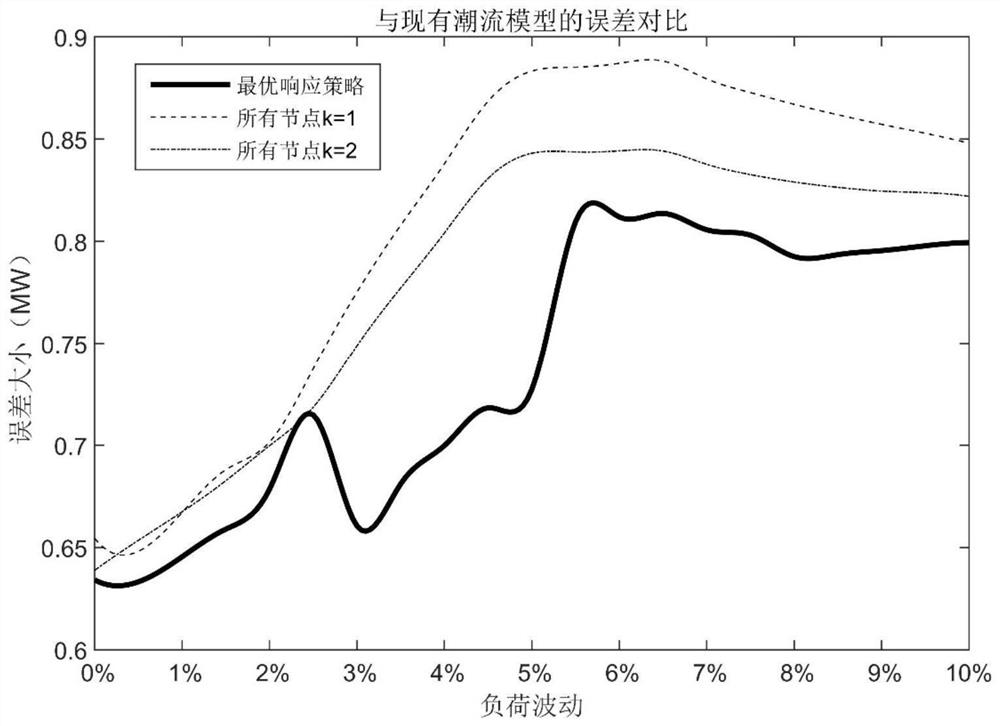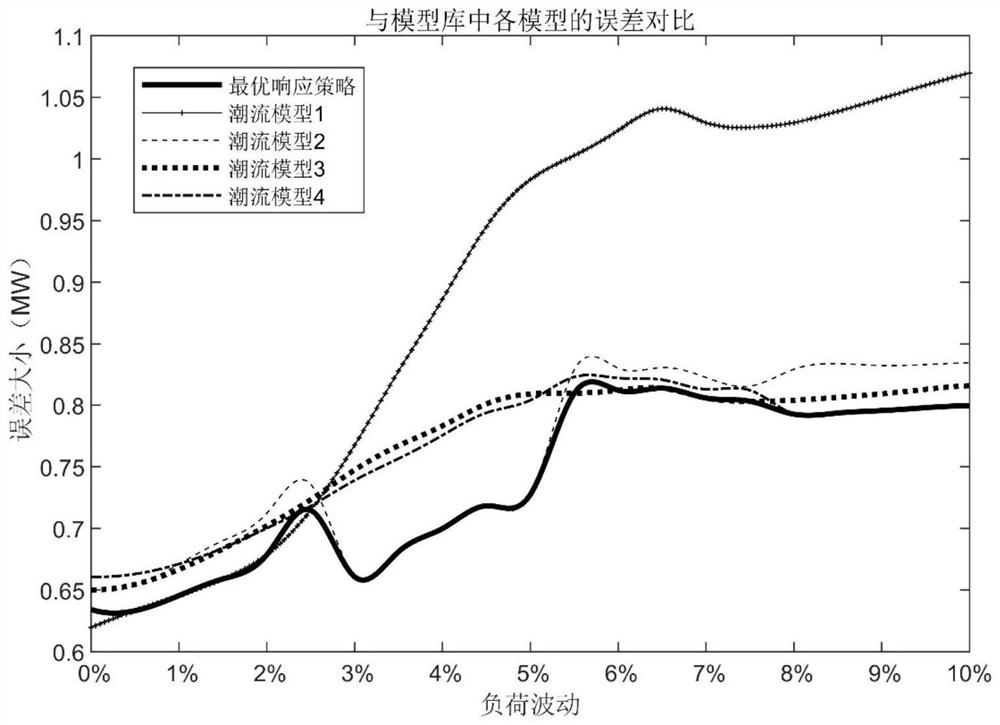Linear power flow model base construction method based on state space transformation and quick response method thereof
A technology of power flow model and state space, which is applied to the direction of AC network with the same frequency from different sources, AC network circuit, AC network voltage adjustment, etc., and can solve the problems of low accuracy of DC power flow model and unfavorable power system economy, etc.
- Summary
- Abstract
- Description
- Claims
- Application Information
AI Technical Summary
Problems solved by technology
Method used
Image
Examples
Embodiment 1
[0104] A method for constructing a linear power flow model library based on state space transformation, including the following steps:
[0105] 1) Set independent variables and perform state space transformation on independent variables.
[0106] The independent variables include node voltage amplitude v and phase difference θ ij .
[0107] The node voltage amplitude is transformed into where k i is the undetermined decision variable. is the node voltage amplitude state variable. k of each node i Different, not limited to integers.
[0108] The voltage phase difference remains unchanged, that is, φ(θ ij ) = θ ij . φ(θ ij ) is the phase difference state variable.
[0109] 2) Establish a general linear power flow model library.
[0110] The steps to build a general linear power flow model library are as follows:
[0111] 2.1) To establish a general linear active power flow equation, the steps are as follows:
[0112] 2.1.1) Establish the active power flow equatio...
Embodiment 2
[0195] The rapid response method of the linear power flow model library construction method based on the state space transformation includes the following steps:
[0196] 1) When the power system is running online, obtain the load fluctuation under operation. Currently calling the linear power flow model library {Ω 1 ,Ω 2 ,...,Ω N}.
[0197] 2) Combine the load fluctuation under the current operation with the linear power flow model library {Ω 1 ,Ω 2 ,...,Ω N}, and compare the load fluctuations corresponding to each model in the current operation, select a set of linear power flow models with the smallest difference with the load fluctuations under the current operation, and apply the selected linear power flow models to the current operating state.
Embodiment 3
[0199] see figure 1 , a method for building a linear power flow model library based on state-space transformation and an experiment on its fast response strategy, mainly includes the following steps:
[0200] 1) Establish an IEEE 30-node test system, including 6 generators, and loads exist at 20 nodes.
[0201] 2) Set 40 historical scenarios, and set the node load power fluctuation of each scenario, the fluctuation range is 0-±10%.
[0202] 3) Use the AC power flow model to calculate the optimal power flow, and obtain the branch transmission power P in each scenario ij and Q ij , the node voltage amplitude and v i Phase difference θ ij .
[0203] 4) Optimize and solve the optimal linear power flow model
[0204] Firstly, the known state variables are substituted into the expression of the general linear power flow model, and the branch linear power flow equation expression P of each branch in each historical scene is obtained ij,L and Q ij,L As follows.
[0205]
...
PUM
 Login to View More
Login to View More Abstract
Description
Claims
Application Information
 Login to View More
Login to View More - Generate Ideas
- Intellectual Property
- Life Sciences
- Materials
- Tech Scout
- Unparalleled Data Quality
- Higher Quality Content
- 60% Fewer Hallucinations
Browse by: Latest US Patents, China's latest patents, Technical Efficacy Thesaurus, Application Domain, Technology Topic, Popular Technical Reports.
© 2025 PatSnap. All rights reserved.Legal|Privacy policy|Modern Slavery Act Transparency Statement|Sitemap|About US| Contact US: help@patsnap.com



